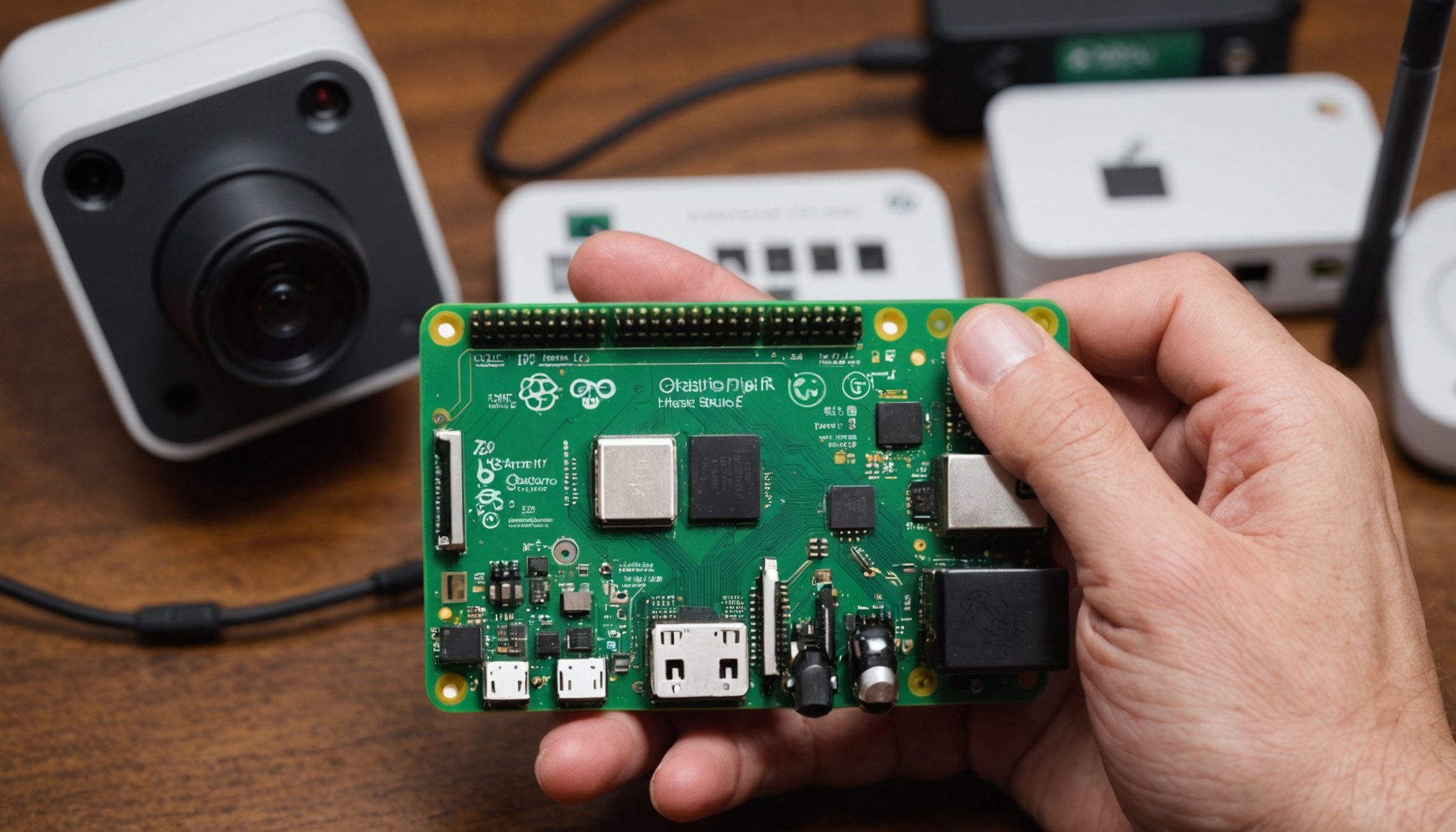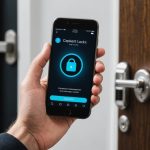Unlocking Home Security Magic: A Step-by-Step Guide to Setting Up a Raspberry Pi with MotionEye
Why Choose Raspberry Pi for Home Security?
When it comes to enhancing home security, one of the most versatile and cost-effective solutions is using a Raspberry Pi. This tiny computer can be transformed into a powerful security camera system using MotionEye, a popular open-source software. Here’s why you should consider this setup:
- Affordability: Raspberry Pi devices are inexpensive, making them an excellent choice for DIY projects.
- Customizability: With MotionEye, you can tailor your security system to fit your specific needs.
- Ease of Use: Setting up a Raspberry Pi with MotionEye is relatively straightforward, even for those new to DIY projects.
Preparing Your Raspberry Pi
Before you dive into the installation process, make sure you have all the necessary components.
In parallel : Upgrade Your Gaming Experience: A Comprehensive Guide to Boosting Alienware Aurora R11 with a New GPU
Parts Required
- Raspberry Pi: Any recent model (3B, 4B, 400, or 5) will work, but the Raspberry Pi 5 is recommended for a smoother experience[2].
- Micro SD Card: A 16GB or larger card is necessary for the operating system and your camera feed[2].
- Raspberry Pi Camera Module: The Raspberry Pi Camera Module 2 NoIR is a good choice for surveillance, especially in low-light conditions[3].
- Power Supply: Ensure you have a reliable power supply for your Raspberry Pi.
- Internet Connection: You’ll need an internet connection for the initial setup and to access your camera feed remotely.
- Display, Keyboard, and Mouse: These are necessary for the initial setup, but you can enable SSH and VNC later to manage your system remotely[2].
Installing the Operating System
To get started, you need to install an operating system on your Raspberry Pi.
Steps to Install the OS
- Download the OS Image:
- Download the latest version of your preferred OS. For this guide, we’ll use a standard Raspberry Pi OS, but you can also use other distributions like Parrot OS if you prefer a more security-focused environment[2].
- Prepare the SD Card:
- Use the Raspberry Pi Imager to write the OS image to your micro SD card. This tool is user-friendly and guides you through the process step-by-step[2].
- Boot Up Your Raspberry Pi:
- Insert the SD card into your Raspberry Pi, connect your display, keyboard, and mouse, and power it up. Follow the on-screen instructions to complete the initial setup.
Setting Up MotionEye
MotionEye is an excellent software for turning your Raspberry Pi into a smart security camera. Here’s how you can set it up:
Also to discover : Turbocharge Your Internet: Securely Configure a Blazing-Fast VPN on Your ASUS RT-AX86U Router – Definitive Step-by-Step Guide
Installation
- Update Your System:
- Open a terminal and run the following commands to update your system:
“`bash
sudo apt update
sudo apt upgrade
“` - This ensures you have the latest packages and security updates.
- Install MotionEye:
- You can install MotionEye using the following command:
“`bash
sudo apt install motion
“` - However, for a more streamlined experience, you can use Docker. Here’s how to set it up using Docker:
“`bash
sudo docker run -d –name motioneye
-p 8081:8081
-v /etc/localtime:/etc/localtime:ro
-v /dev/video0:/dev/video0
-v /mnt/data:/data
ccrain/motioneye
“` - This command sets up MotionEye in a Docker container, making it easier to manage and update[4].
Configuration
- Access the Web Interface:
- Open a web browser and navigate to
http://your-raspberry-pi-ip:8081. You will see the MotionEye web interface. - Log in with the default credentials (username:
admin, password:password) and change them immediately for security reasons.
- Configure Your Camera:
- Go to the
Cameratab and configure your camera settings. You can adjust resolution, frame rate, and other settings to optimize your camera feed. - Make sure to enable
Motion Detectionif you want to receive alerts when motion is detected.
- Set Up Notifications:
- You can set up notifications via email or other services. Go to the
Notificationstab and configure your preferred notification method. - For example, you can set up email notifications using your email provider’s SMTP settings.
Integrating with Home Assistant
Integrating your MotionEye camera with Home Assistant can enhance your smart home experience.
Prerequisites
- Home Assistant Installation: Ensure you have Home Assistant installed on another device, such as another Raspberry Pi or a dedicated server[1].
Adding MotionEye to Home Assistant
- Open Home Assistant Dashboard:
- Go to your Home Assistant dashboard and navigate to the
Settingsmenu.
- Add a New Card:
- Click on
Configure UIand add a new card of the typePicture. - In the
Image URLfield, enter the URL of your MotionEye camera feed (e.g.,http://your-raspberry-pi-ip:8081/picture/1/current/).
- Save and Return:
- Click the “SAVE” button and return to the main dashboard. You should now see your camera feed integrated into Home Assistant.
Advanced Features and Tips
Motion Detection and Alerts
- Customize Motion Detection: You can fine-tune motion detection settings in the MotionEye web interface. Adjust sensitivity and threshold levels to minimize false alerts.
- Use with Other Smart Devices: Integrate your camera with other smart devices, such as smart doorbells or motion sensors, to create a comprehensive smart home security system.
Remote Access
- Enable VNC or SSH: To access your Raspberry Pi remotely, enable VNC or SSH. This allows you to manage your system and view your camera feed from anywhere[2].
- Use a Mobile App: There are several mobile apps available that allow you to view your camera feed and receive notifications on your smartphone.
Power Supply and Placement
- Stable Power Supply: Ensure your Raspberry Pi has a stable power supply to avoid interruptions in your camera feed.
- Strategic Placement: Place your camera in a strategic location to cover the areas you want to monitor. Consider using a fake/dummy dome security camera housing for a more discreet setup[1].
Practical Insights and Actionable Advice
Security Considerations
- Change Default Credentials: Always change the default credentials for your MotionEye and Home Assistant installations to prevent unauthorized access.
- Use Secure Connections: Use HTTPS for your web interface and ensure that any remote access is done over secure connections.
Maintenance and Updates
- Regular Updates: Regularly update your system and software to ensure you have the latest security patches and features.
- Backup Your Configuration: Backup your MotionEye configuration and Home Assistant setup to avoid losing your settings in case of a system failure.
Setting up a Raspberry Pi with MotionEye is a straightforward and effective way to enhance your home security. With its customizable features, integration capabilities with Home Assistant, and remote access options, this setup can provide you with peace of mind and real-time monitoring of your home.
Detailed Steps Summary
- Prepare Your Raspberry Pi: Install the operating system, update your system, and ensure all necessary components are in place.
- Install MotionEye: Use Docker or a direct installation method to set up MotionEye.
- Configure Your Camera: Adjust camera settings, enable motion detection, and set up notifications.
- Integrate with Home Assistant: Add your camera feed to your Home Assistant dashboard for a unified smart home experience.
- Ensure Remote Access and Security: Enable VNC or SSH, use secure connections, and change default credentials.
By following these steps and tips, you can create a robust and smart home security system that works seamlessly with your existing smart devices.
Table: Comparison of MotionEye and Other Surveillance Software
| Feature | MotionEye | Motion | MotionEyeOS |
|---|---|---|---|
| Ease of Installation | High | Medium | High |
| Customizability | High | Medium | High |
| Motion Detection | Yes | Yes | Yes |
| Web Interface | Yes | Limited | Yes |
| Remote Access | Yes | Limited | Yes |
| Integration with Home Assistant | Yes | Possible with workarounds | Yes |
| Open Source | Yes | Yes | Yes |
Quotes and Anecdotes
- “I was amazed at how easy it was to set up MotionEye on my Raspberry Pi. Now, I can monitor my home from anywhere and receive alerts when motion is detected.” – John D., Home Security Enthusiast
- “Integrating MotionEye with Home Assistant has taken my smart home to the next level. It’s so convenient to have all my security feeds in one place.” – Sarah K., Smart Home User
By leveraging the power of Raspberry Pi and MotionEye, you can create a smart and secure home environment that is both affordable and highly customizable. Whether you’re a seasoned DIY enthusiast or just starting out, this guide provides you with the tools and knowledge to unlock the full potential of your home security system.










